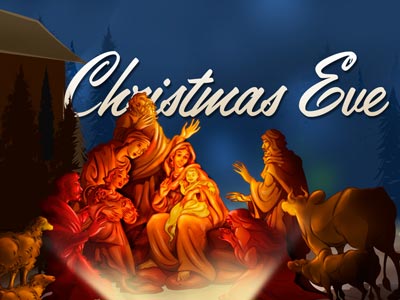-
“jesus Came To Overcome Blindness”
Contributed by Sean Harder on Nov 28, 2017 (message contributor)
Summary: We heard last week that Jesus says he came so that no one should remain in darkness, and just before that he says that anyone who sees me sees the Father. What does this mean? It means that the truth that is the most imperative for all people, is to believe that Jesus is God in the flesh.
“Jesus Came to Overcome Blindness”
(2 Cor 4:1-7)
English author H. G. Wells—famous for science fiction novels like The Time Machine, and The War of the Worlds—once wrote a short story called “The Country of the Blind.” It’s about an inaccessible, luxurious valley in Ecuador where, due to a strange disease, everyone is blind. After 15 generations of this blindness there was no recollection of sight or color or the outside world at all. Finally a man from the outside—a man who could see—literally fell into their midst. He had fallen off a high cliff and survived, only to stumble into their forgotten country.
When he realized that everyone else was blind, he remembered the old adage: “In the country of the blind, the one-eyed man is king.” Wells writes:
He tried at first on several occasions to tell them of sight. “Look here, you people,” he said. “There are things you do not understand in me.” Once or twice one or two of them attended to him; they sat with faces downcast and ears turned intelligently towards him, and he did his best to tell them what it was to see.
But they never believed him. They thought he was crazy. The man fell in love with a girl there and the girl’s father, Yacob, went to talk to a doctor about him. A conversation ensued:
[The doctor said]: “I think I may say with reasonable certainty that, in order to cure him complete, all that we need to do is a simple and easy surgical operation— namely, to remove these irritant bodies [his eyes!].”
“And then he will be sane?”[they asked].
“Then he will be perfectly sane, and a quite admirable citizen.”
“Thank Heaven for science!” said old Yacob.
Wells goes on to point out that the man would not be allowed to marry Yacob’s daughter unless he submitted to an operation that would blind him. So what would the man do?
Wells writes:
He had fully meant to go to a lonely place where the meadows were beautiful with white narcissus, and there remain until the hour of his sacrifice should come, but as he walked he lifted up his eyes and saw the morning, the morning like an angel in golden armour, marching down the steeps…
It seemed to him that before this splendour, he and this blind world in the valley, and his love and all, were no more than a pit of sin. And the man who could see escaped the country of the blind with his life.
Doesn’t that sound a lot like the world we live in? A land of the blind that is proud of its science, sure of its health, and oblivious to the light? It’s not only pitiful; it’s deadly. Jesus said, “People love darkness rather than the light” and he had his own name for this country of the blind, he called it the world.
In the book of Matthew, the first thing Jesus says as he begins his ministry in Matthew 4 is from a prophecy in Isaiah: “the people dwelling in darkness have seen a great light, and for those dwelling in the region and shadow of death, on them a great light has dawned”. Of course he’s talking about himself.
As I said last week, Advent is a clash of two kingdoms—darkness and light. Christ is the only way that darkness can be overcome, and through him we can receive sight. His power over nature and death, his understanding of human nature, and his zeal for God conquer all that is dark.
Last week we talked about Jesus being the light and how he came to overcome darkness. Today we kind of expand on that, only now we will look at how this light overcomes blindness. Remember darkness represents death and evil, blindness now represents an inability to see the truth about God. Remember Jesus said he is the truth as well as the way and the life. Today we focus on the truth.
If anyone should know about blindness and truth it would be the apostle Paul, who we know was struck blind by Jesus himself during his conversion, in essence so that he could see the truth even though he was already a highly educated religious man. So hear what he says at the beginning of 2 Corinthians chapter 4:1-6…
So Paul was healed of his blindness after he believed, and it’s interesting that the most common healings that Jesus did were with lepers, the lame, and the blind. If you look at the symbolism of these you see that healing a leper represents purifying, healing the lame represents enabling to go and witness about God, and the healing of the blind represents seeing and knowing the truth. All of those things are necessary for a person to follow Christ.

 Sermon Central
Sermon Central



